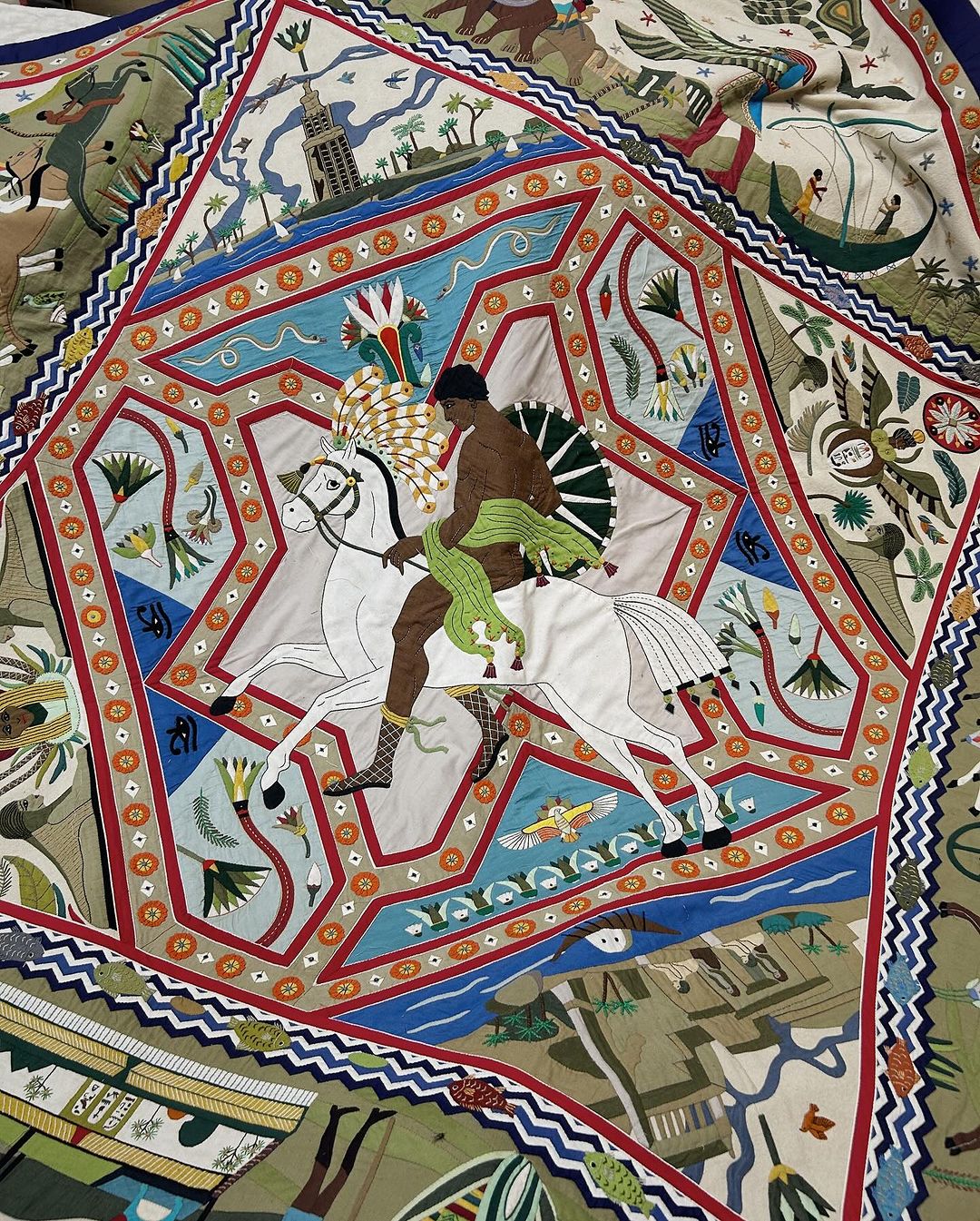At the heart of our mission is a desire to share our distinctive tales and craftsmanship with the world. We are not vendors. We are purveyors of a unique vision to decommodify our life’s work, to reclaim narratives, and to reshape perceptions while keeping focused on improving the socio-economic conditions of our communities.
We are a home-grown, invite-only, B2B community sharing Africa and the Levant’s rich heritage with the world. While being deeply rooted in the values of “ubuntu” (meaning ‘I am, because we are’), we are bringing together businesses and communities through our curated collection of one-of-a-kind art tapestries.
We are cultivating a sustainable ecosystem that enriches and empowers our communities, one that is also deeply committed to elevating the conditions of the most vulnerable among us, while simultaneously fostering deep and meaningful connections that transcend borders—those that move beyond the transactional nature of interactions at markets set up for passers-by.
We are unwavering in our commitment. We build to lay the foundations for a legacy that endures far beyond our fleeting existence. To leave an indelible impact that resonates with the very essence of humanity, enriching the lives of all those who come into contact with it, for generations to come.
Welcome to heart-made goodness.
It’s no surprise that here, too, exists exploitative relationships. Those who have the means and access to markets and clients almost always take advantage of the humble craftspeople who so diligently and quietly toil with their hands and hearts. The obuntō model is one of ownership by the people who create.
To access the website or learn more, please email me. www.obunto.com
Ramses Wissa Wassef
In the heart of old Cairo, there is a place like no other.
Ramses Wissa Wassef, an architect and artist, imagined a place where children would be given the freedom to develop their God-given imagination and creativity.
And so, the Ramses Wissa Wassef Art Centre was born.
It was established in a small farmer’s village, devoid of any artistic traditions. Children as young as 11 years of age were trained on the loom, given freedom to create on their own terms.
What you will see are one-of-a-kind pieces, made from natural vegetable dyes.

The creative energy of the average person is being sapped by an abstract conformist system of education, and by the extension of industrial techniques infiltrating every field.
Ramses Wissa Wassef
But while the machine threatens to reduce human beings to passivity, it also frees them to develop a potential that will wither away if it does not find real fields for action.
The Tentmakers of Cairo
In the shadow of Bab Zuweila, one of the last remaining gates from Cairo’s storied Fatimid era, a master Tentmaker toils with quiet dedication in his humble workshop. Hunched over a vast expanse of heavy calico, his hands move with the fluid precision of a lifetime devoted to perfecting his art. Upon this blank canvas, he paints tales in vibrant hues and elaborate patterns, crafting magnificent appliqué panels that once graced the interiors of desert tents and pavilions, summoning the splendor of a bygone age.
Captivated by the artistic depth of this ancient tradition, foreign artists and designers have sought out these revered custodians of Egypt’s cultural heritage, forging collaborations that bridge time and space (see sample collaboration below). Together, they breathe new life into the craft, creating contemporary fabric artworks that harmoniously intertwine tradition with innovation. These bold creations, deeply rooted in the history and culture of our civilisation, resonate with a revitalized vitality, enchanting a new generation and ensuring that this unique Egyptian art form endures and flourishes in the modern world.
—
To learn more about the Tentmakers of Cairo, I recommend Dr. Seif El Rashidi’s book, The Tentmakers of Cairo: Egypt’s Medieval and Modern Appliqué Craft.
